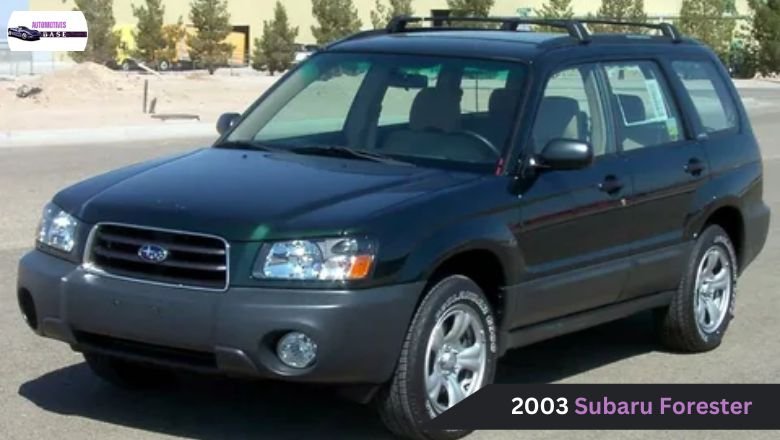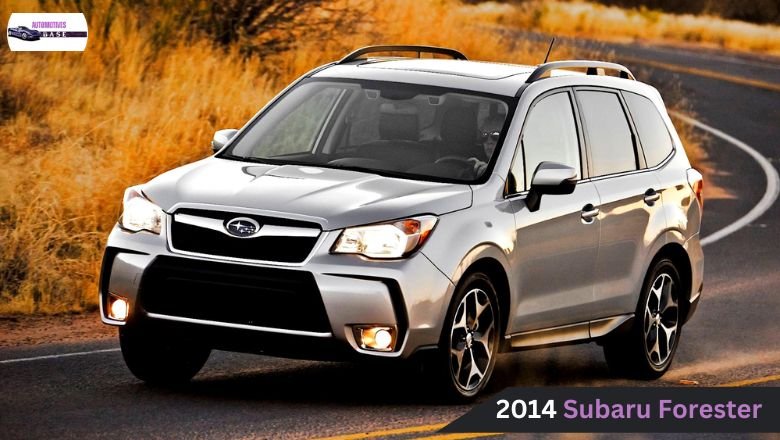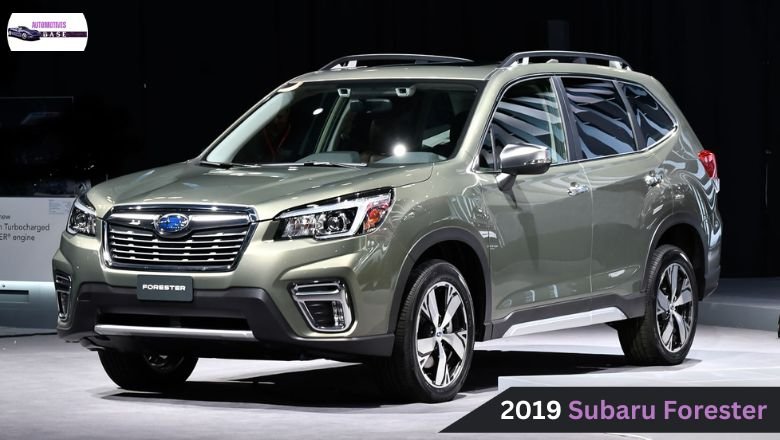We’ve researched and ranked each generation of Subaru Forester to help you steer clear of the best and worst Subaru Forester years and drive straight towards the reliability, safety features, owner reviews, and complaints for every Forester model. By tapping into data from trusted sources like NHTSA, Consumer Reports, and Kelley Blue Book, we’ve compiled a definitive list that highlights the standout performers and cautionary tales in the world of Subaru Foresters.
Subaru Forester Generations
The Subaru Forester has evolved through several generations since its debut in 1998. The first generation symbolized the fusion of car-like comfort with SUV utility, featuring enhanced visibility and all-wheel-drive capability. Subaru has consistently prioritized safety and performance, making the Forester a reliable choice for various driving conditions.
Some owners have cited transmission issues in certain year models, notably those from the second generation (2003–2008). Subaru’s commitment to innovation has led to continual improvements in subsequent generations.
| Generations | Years |
|---|---|
| 1st generation (SF) | 1998-2002 |
| 2nd generation (SG) | 2003-2008 |
| 3rd generation (SH) | 2009-2013 |
| 4th generation (SJ) | 2014-2018 |
| 5th generation (SK) | 2019-Present |
The evolution between generations in automotive lines brings significant changes in technology, design, and performance. These shifts play a crucial role in determining the value and capabilities of the vehicle. When considering a purchase, understanding these generational distinctions helps buyers make informed decisions. For example, newer generations may feature more advanced safety systems, improved fuel efficiency, and enhanced driving dynamics.
Subaru Forester Reliability By Year
When evaluating the best, neutral, and worst years for the Subaru Forester, we take into account a variety of factors to ensure accuracy in our rankings. These factors include owner-reported reliability through surveys, annual maintenance costs, safety ratings, Consumer Reports reliability and owner satisfaction scores, NHTSA recalls and investigations, as well as Edmunds, JD Power, Kelley Blue Book (KBB), VehicleHistory.com, and Cars.com owner ratings.
By analyzing data from multiple sources, we aim to provide a comprehensive overview of the Forester’s performance and owner satisfaction across different model years. The upcoming graph will display a combination of ratings gathered from these platforms to give a clear representation of how each year fares in terms of overall quality and reliability.
Neutral Years in terms of car performance and reliability refer to those that do not excel or fail significantly. These years are characterized by average standings without leaning towards either extreme end. It is essential to note that certain factors can negatively impact a car’s ranking, such as the number of NHTSA recalls.
Models with more complaints and recalls are perceived as less reliable. Understanding the neutrality of certain model years can help in making informed decisions when purchasing a car.
Best And Worst Subaru Forester Years, 1st Generation (1998–2002)
The first-generation Subaru Forester, introduced in 1998, set the standard for compact SUVs by combining ruggedness with suburban practicality. This innovative vehicle quickly gained popularity for its versatile design and smooth handling on all types of terrain. The best year for Subaru Forester was 2001, when it received a facelift and improved safety features, making it even more appealing to buyers.

The worst year for the first-generation Forester was 2002, as it faced some reliability issues with engine components that needed frequent maintenance. The Subaru Forester’s first-generation models are still highly regarded by enthusiasts for their durability and off-road capabilities. The blend of utility and comfort in these early models created a loyal following that continues to this day.
Best Years For Subaru Forester: 2000, 2001, 2002
From 2000 to 2002, the Forester saw significant improvements in performance and features. Subaru maintained the 2.5-liter SOHC engine while offering upgraded powertrain options for smoother driving. Consumers had a variety of trim levels to choose from, ranging from the basic L to the premium S with advanced technology features like better audio systems and improved upholstery.
Safety features were also enhanced, with reinforced crash structures and advanced airbag systems. Positive fuel efficiency ratings, there were persisting issues with head gaskets, transmissions, and wheel bearings that affected reliability during these years.
The Worst Years: 1998, 1999
In 1990 Subaru Forester faced significant issues with their Forester models from 1998 and 1999. The 1998 Forester was plagued by engine problems, specifically head gasket failures in the 2.5-liter DOHC engines, causing frustration among owners.
Transmission glitches were common, including clutch chattering and failure to engage, particularly notable in colder weather conditions. Suspension challenges also arose, with rear wheel bearings showing premature wear and subsequent failure.
Subaru of America Inc. had to issue recalls for a substantial number of the 1998 and 1999 Subaru Forester models due to extended braking distances in cold environments, which posed a serious safety risk. These model years proved to be some of the worst in terms of reliability and performance for the Subaru Forester lineup during that time period.
In 1999, the Forester faced similar problems as its predecessors. Head gasket failures were a major concern when wheel bearing wear and transmission issues also plagued owners. The financial impact of these issues was significant, with repairs like head gasket replacements costing owners between $1600 and $2300, depending on additional components needing replacement.
These expensive repairs put a strain on owners’ wallets and affected the overall ownership experience of the Forester. The 1999 Subaru Forester was not immune to these recurring issues, which added to the maintenance costs over time. Owners found themselves dealing with shifting difficulties and other mechanical challenges that required attention and money.
Worst And Best Year Subaru forester, 2nd Generation (2003–2008)
The Subaru Forester’s second generation from 2003 to 2008 saw significant improvements and updates, marking a notable evolution in the model’s design and features. The years between 2003 and 2005 Subaru Foresters are often considered the best for this generation, as these models introduced key upgrades like more rugged exterior styling and enhanced safety features. Many drivers appreciated the balance of power and fuel efficiency offered by the Foresters during these years.

Some consider the later years of this generation, particularly around 2007–2008, to be less favorable due to reported issues with head gaskets and oil consumption in some models. These problems led to increased maintenance costs for owners during these years.
Best Year For Subaru Forester: 2003, 2004, 2005
Between 2003 and 2005, Subaru released a range of models in the USA, including the X, XS, and XT trims with different engine options. The XS trim boasted luxurious features like panoramic sunroofs and heated seats, enhancing the driving experience. These years also marked the introduction of Subaru’s Symmetrical All-Wheel Drive system as a standard feature, improving stability on various terrains.
Safety upgrades were prominent during this period, with improved braking systems and additional airbags contributing to enhanced protection for drivers and passengers. Consumer Reports noted a surge in owner satisfaction with the Subaru models from 2003 to 2005, particularly highlighting their reliability and overall performance.
Fuel efficiency was another positive aspect of these vehicles, with average consumption rates of 15 mpg in the city and 28 mpg on highways. These years were considered some of the best for Subaru enthusiasts due to the impressive features, safety enhancements, and high customer satisfaction levels.
The Neutral Years: 2007, 2008
The neutral years of 2007 and 2008 for the Subaru Frontier models saw a continuation of familiar engine options, trim levels, and technological features from previous years. Subaru maintained its commitment to safety by maintaining key features like symmetrical AWD and including advanced driver-assist systems in higher trims.
Some owners experienced issues with fuel lines contracting excessively in cold weather, leading to an unpleasant fuel smell. This problem was acknowledged and addressed by Subaru in later models to improve the driving experience for customers. A recall was issued for potential corrosion of the front lower control arms due to exposure to snow-melting agents on roads.
The Worst Years: 2006
The 2006 Subaru Forester had a rough year with various issues. The most notable problem was the persistent leaky head gasket issue, especially in colder regions, causing significant inconvenience and maintenance expenses for owners. There were complaints of a strong fuel odor in cold weather conditions similar to the following model years.
The recall for potential front lower control arm breakage due to rust, particularly in areas with heavy winter road salt use, added to the worries. Reports of sporadic transmission inconsistencies further diminished the appeal of the 2006 model compared to other vehicles in its class.
Best And Worst Subaru Forester Years, 3rd Generation (2009–2013)
The Subaru Forester 3rd generation experienced both highs and lows during its production run. The launch in 2009 introduced a combination of rugged SUV features and refined family car comfort, making it a versatile choice for various lifestyles.

This generation faced issues with a notable uptick in NHTSA recalls and customer complaints. It is crucial for potential buyers to meticulously check the vehicle identification number (VIN) before making any purchase decisions to ensure they are not inheriting any existing problems. The Forester’s redesigned platform, improved interior functionality, and updated aesthetic showcased Subaru’s dedication to enhancing the overall driving experience.
Best Year Subaru Forester: 2011, 2012
The 2011 and 2012 Subaru Forester models were praised for showcasing Subaru’s commitment to enhancing performance and reliability. With an average of 15 recalls, these models offered trim levels like the 2.5X Limited, Premium, and XT with turbo options.
The interior featured either black or light gray color options, complemented by three upholstery choices, including leather. Subaru’s Symmetrical All-Wheel Drive system and improved suspension setups provided a comfortable and stable ride quality.
With fuel consumption of 16 mpg in the city and 28 mpg on the highway, the third generation Forester boasted efficiency. Subaru tailored the vehicle for off-road capabilities by adjusting ground clearance and all-wheel-drive system settings for better rugged terrain performance.
Reviews from both critics and customers praised these models for their high owner satisfaction scores and fewer reported issues, solidifying their success during those years.
The Worst Years: 2009, 2010, 2013
The 2009, 2010, and 2013 Subaru Forester models faced numerous challenges, especially in terms of safety and reliability. The 2009 model had significant recalls related to the passenger frontal airbag inflators, which posed a serious risk of explosion. Issues with electrical malfunctions, engine oil supply pipes, and seat welds were also reported by owners.
In the case of the 2010 Subaru Forester, complaints were made about driver’s seat welds breaking and occasional head gasket problems. The 2013 Forester experienced fewer recalls but still had its share of issues that affected its reputation for dependability and performance.
Subaru Forester Reliability By Year, 4th Generation (2014-2018)
The Subaru Forester 4th Generation, spanning from 2014 to 2018, marked a significant shift in Subaru’s approach. With a focus on quality and innovation, Subaru aimed to address previous shortcomings while keeping up with industry trends. This generation saw the Forester emerge as a versatile crossover SUV, blending urban chic with off-road capabilities seamlessly.

The best year for the Subaru Forester 4th Generation was 2016, known for its improved handling and enhanced safety features. The addition of advanced technologies and comfort upgrades made this year particularly popular among buyers. It wasn’t without its drawbacks; some users experienced issues with the CVT transmission in certain models during this period.
The Best Years: 2016, 2018
The 2016 and 2018 Subaru Forester models are celebrated for their performance and features. They come in various versions, including the base, Premium, Limited, and Touring, as well as the turbocharged 2.0XT with 253 PS. These models introduced Subaru’s Eyesight Driver Assist Technology for enhanced safety. Interior quality was upgraded with premium materials and advanced infotainment options.
Ride quality and cabin noise insulation were improved to cater to urban commuters and highway travelers. The X-Mode feature was added for better performance in challenging terrains. Fuel efficiency also saw an improvement, reaching 18 mpg city and 35 mpg highway for these fourth-generation models.
The Worst Years: 2014, 2015, and 2017
The 2014 Subaru Forester faced various issues, including problems with the Occupant Detection System, suspension wobbling at high speeds, and excessive oil consumption. The debut model for this generation had owners reporting multiple grievances related to these issues. The 2015 Subaru Forester carried forward some of these problems, such as airbag issues and engine malfunctions leading to recalls.
Owners also raised concerns about erratic speed control in the 2015 models. In 2017, complaints focused on windshield cracks and a service program was initiated to address air conditioning condenser corrosion in certain models. Subaru has yet to issue any recalls, despite the rising number of complaints from owners during these years.
Best And Worst Subaru Forester Years, 5th Generation (2019–present)
The Subaru Forester 5th generation, introduced in 2019, saw significant improvements over its predecessors. With an increased wheelbase and a sleek design overhaul, the Forester gained more interior space and a modern look. The years following its launch have been marked by continuous advancements in technology and safety features.

The best year for the Forester 5th generation was 2021, when Subaru introduced additional driver-assist technologies and enhanced entertainment options. This year also received high praise for its reliability and comfort on long drives.
Best Subaru Forester Years:2021, 2022, and 2023
The best years for Subaru Foresters are 2021, 2022, and 2023. Powered by a robust 2.5-liter flat-four engine, these models excel in delivering both power and efficiency. The symmetrical all-wheel drive system ensures a seamless transition between city streets and off-road adventures. Available in trim levels like Basic, Premium, Sport, Limited, and Touring, the Forester caters to various preferences.
Standard features include the Starlink multimedia system with a user-friendly 6.5-inch touchscreen. Advanced safety technologies like the Eye-Sight Driver Assist Technology enhance driver confidence with lane centering and adaptive cruise control functionalities. These models also achieve impressive fuel efficiency ratings of 20 mpg in the city and 38 mpg on highways.
The 2021–2023 Subaru Foresters stand out as versatile vehicles that blend performance, technology, and safety seamlessly for an enhanced driving experience.
The Neutral Years: 2020
In 2020, the Subaru Forester entered a phase of transition, maintaining its traditional design and performance standards. Compared to the previous year’s model, the 2020 Forester experienced fewer issues but fell short in terms of advanced features.
Owners reported a recurring windshield problem with spontaneous cracks, though overall safety and reliability remained strong. The vehicle continued to uphold Subaru’s reputation for ruggedness, making it a reliable choice for compact SUV buyers.
The Worst Years: 2019
In 2019, Subaru Forester owners faced numerous issues that impacted both safety and functionality. Cracked windshields were a prevalent concern, posing risks to the placement of Subaru’s Eye-Sight cameras. The high cost of windshield replacement, estimated at over $1000, added to the burden on owners. Failures in the Thermostat Control Valve (TCV) affected temperature regulation without any recall from Subaru to address the issue.
The Eye-Sight safety system experienced intermittent malfunctions, with reports of it turning off unexpectedly. Another common problem was battery drainage in models spanning from 2016 to 2022. These combined issues created an unpleasant ownership experience for many Subaru Forester drivers in 2019.
Subaru Forester Average Resale Values
The Subaru Forester has proven to be a strong contender in the automotive market with its consistent resale values over the years. This graph illustrates how the Forester maintains its value well, reflecting its enduring appeal and reliability to buyers. The steady resale values of the Forester indicate a high level of consumer trust in its longevity and performance.

The Forester’s average resale values show a relatively marginal decline. This data underscores the continued demand for this versatile SUV model among consumers seeking both reliability and value retention in their vehicles.
Conclusion
The best and worst Subaru Forester years have proven to be superior in terms of performance and value. By focusing on the highest-rated years identified in this article, drivers can ensure they are getting the most out of their investment.
It is crucial to steer clear of the worst-performing Subaru Forester years highlighted here to avoid potential headaches down the road. Make an informed decision when purchasing a Subaru Forester by heeding our recommendations and staying away from the models that may cause issues.
FAQ`s
Is a Forester Fuel Efficient?
The Subaru Forester is often touted for its fuel efficiency by the manufacturer, with an advertised average fuel consumption of 7.4 liters per 100km on the combined cycle. Real-world testing conducted by our team yielded a significantly higher figure of 10.0 L per 100km. This discrepancy between official claims and practical results indicates that factors such as driving conditions, terrain, and individual driving habits can impact fuel efficiency in a real-world scenario.
What Are The Best Subaru Forester Years?
2014 Subaru Forester is one standout year, known for its spacious interior, comfortable ride, and excellent fuel efficiency. 2019 Subaru Forester, which offers advanced safety features, a refined cabin design, and a smooth driving experience is another highly regarded year.

